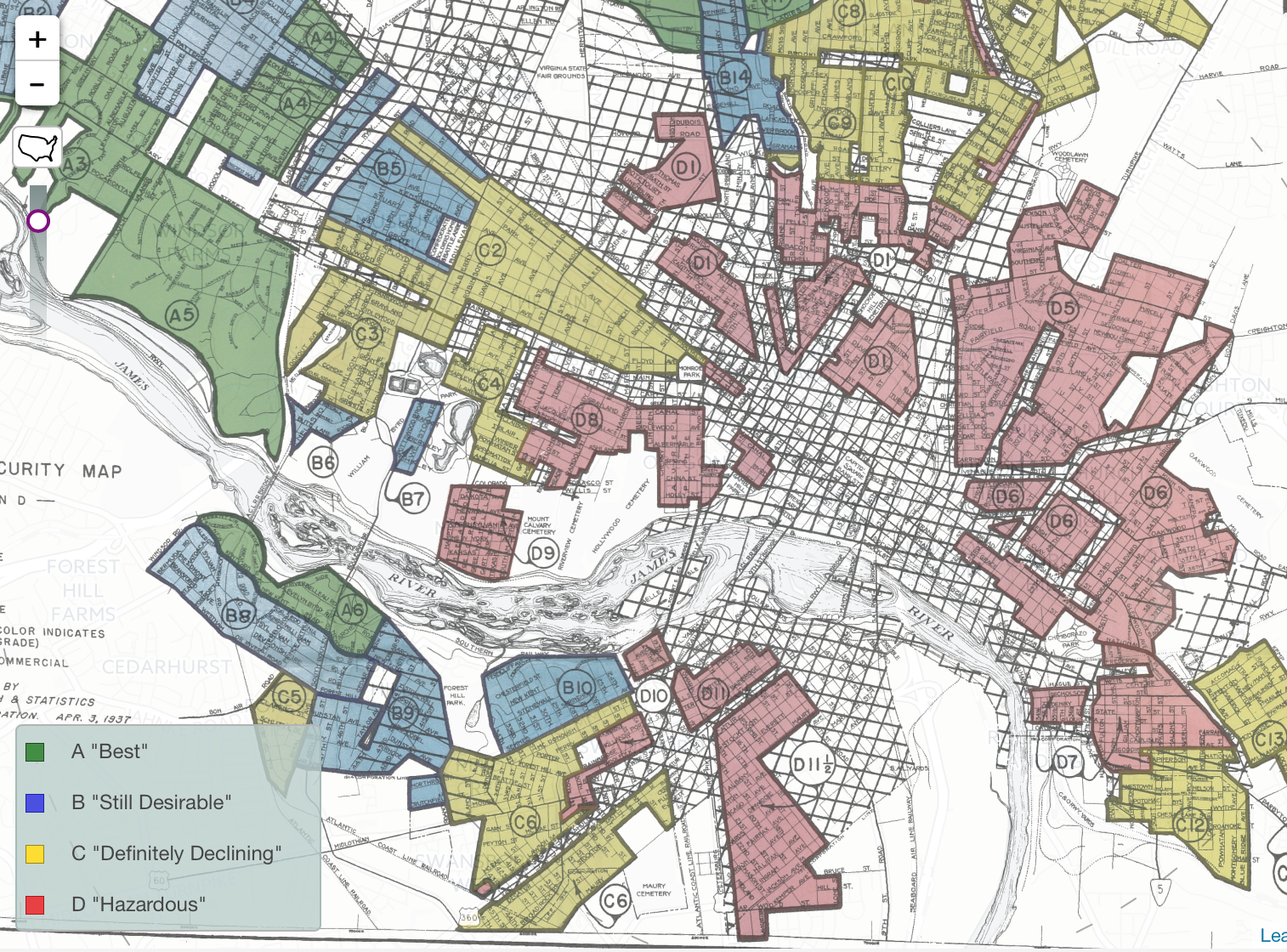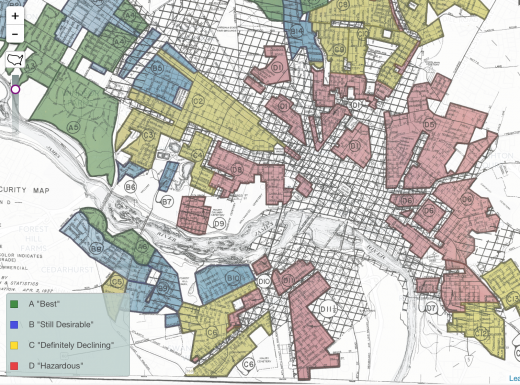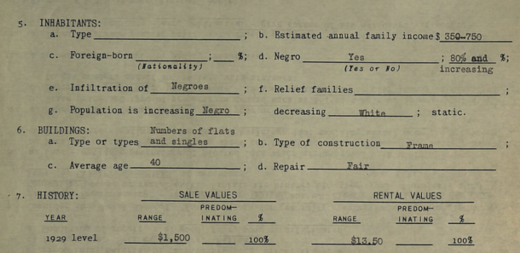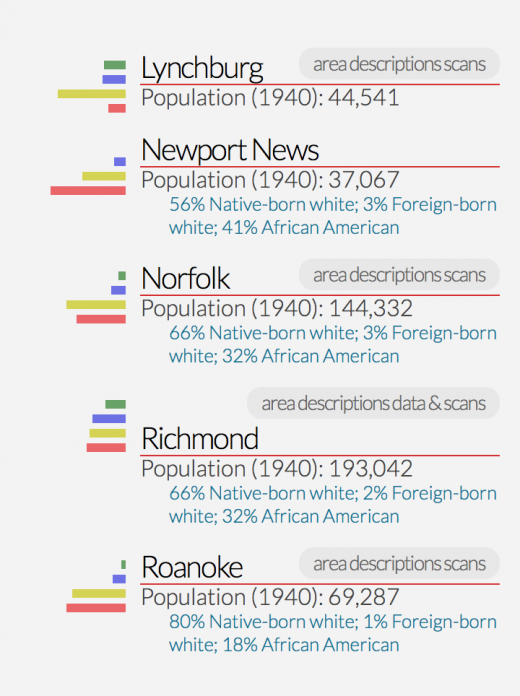RECENT COMMENTS

Mapping Inequality shows relation between racism and the built environment
In what looks like a national roll out of their earlier Relining Richmond project, the University of Richmond’s Mapping Inequality contains 150 interactive maps and roughly 5000 individual area descriptions:
Mapping Inequality updates the study of New Deal America, the federal government, housing, and inequality for the twenty-first century. It offers unprecedented online access to the national collection of “security maps” and area descriptions produced between 1935 and 1940 by one of the New Deal’s most important agencies, the Home Owners’ Loan Corporation or HOLC (pronounced “holk”).
HOLC recruited mortgage lenders, developers, and real estate appraisers in nearly 250 cities to create maps that color-coded credit worthiness and risk on neighborhood and metropolitan levels. These maps and their accompanying documentation helped set the rules for nearly a century of real estate practice. […] Through offering a digital library of the state’s role in housing development, Mapping Inequality illustrates vividly the interplay between racism, administrative culture, economics, and the built environment.
— ∮∮∮ —
— ∮∮∮ —
— ∮∮∮ —
— ∮∮∮ —










This resource underscores the importance of increasing the level of home ownership among throughout the many neighborhoods that comprise the East End of Richmond.
We are fortunate that organizations like Better Housing Coalition, Urban Hope, Habitat for Humanity and others, have worked/are working to increase home-ownership in historically red-lined communities including Union Hill, Fairmount, Church Hill, Oakwood, Peter Paul and beyond.
Please join me in encouraging those organizations to keep up the good work in our community by increasing opportunities for first-time homeowners.
@ Elaine Odell – Every time there is a discussion of redlining, the conversation turns to home ownership. I’m not saying you’re wrong to think that homeownership initiatives are important, but I wonder how this historically effected the ability of landlords and developers to maintain and improve properties in the neighborhoods? I’m a realist – no one is likely to feel bad for landlords who didn’t maintain their properties. But if redlining also meant there was no money available (through refinance) for major repairs or upgrades to rental properties, then the banks may have been responsible for the declining quality or ongoing low quality of rental housing in the area as well.
@2: Homeownership (in modern times) is how working class American families establish wealth–the same wealth that can be used for college tuitions and nest eggs for retirement–or the down payment on the next generations’ first home.
This is what white families have been benefiting from for the past half century, while black families have been left out in he cold.
If you haven’t already, please go to the UR website (a colaboration with Univ of Md and VaTech) and learn about the racist activities of our post WW2 government’s Home Owners Loan Corporation. There are plenty of other online sources, too, about government-supported home ownership programs that were systematically biased toward white low income/working class families.
Of course the banks used that data, but it was our own government that systematically favored white working class families over black families for affordable mortgages on existing homes and the financing to build new houses.
The original neighborhoods of the EastEnd started out as home-ownership communities in the late 19th century and early 20th. It was after only the rise of suburbia, that our neighborhoods saw owner-occupied homes become rental properties. By that time, redlining was, of course in full effect. And you are right, it was fairly impossible to get a bank to loan money for an affordable rehab in Church Hill or Union Hill as late as the 1990’s.
There will always be plenty of room for rental properties mixed in with owner occupied in neighborhoods across Richmond. The East End is happily showing that diversity of late and I think most of us living in Greater Church Hill are happy with this balance of rental units mixed in with owner occupied.
But, at the end of the day, homeownership helps lower income working families become middle class families. It’s good for all of us. Why would we not encourage this?